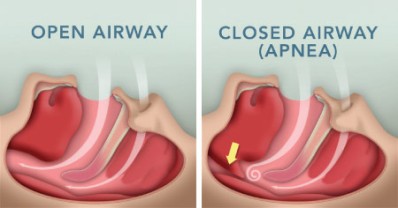A ma jor concern developing recently for commercial vehicle drivers is obstructive sleep apnea being prevalent for several decades. Insufficient sleep can affect drivers’ abilities to react efficiently and expediently the idea being supported by an increasing body of knowledge that leads to motor vehicle accidents. Short sleep periods, long driving time, and dysfunctional sleep breathing episodes are the terminologies that best describe insufficient sleep.Motor vehicle crash factors are considered as the factors associated with an increased risk in patients with obstructive sleep apnea (OSA). Treatment with continuous positive airway pressure (CPAP) reduces the driving risk by ≥ 50%. Patients who regularly use continuous positive airway pressure may have persistent residual excessive daytime sleepiness (EDS).
jor concern developing recently for commercial vehicle drivers is obstructive sleep apnea being prevalent for several decades. Insufficient sleep can affect drivers’ abilities to react efficiently and expediently the idea being supported by an increasing body of knowledge that leads to motor vehicle accidents. Short sleep periods, long driving time, and dysfunctional sleep breathing episodes are the terminologies that best describe insufficient sleep.Motor vehicle crash factors are considered as the factors associated with an increased risk in patients with obstructive sleep apnea (OSA). Treatment with continuous positive airway pressure (CPAP) reduces the driving risk by ≥ 50%. Patients who regularly use continuous positive airway pressure may have persistent residual excessive daytime sleepiness (EDS).
A current study involved the assessment of Armodafinil effect and was designed to evaluate on simulated driving performance and subsequent continuous positive airway pressure treatment compliance in patients newly diagnosed with OSA along with EDS during a 2-week “waiting period” prior to initiation of CPAP. A cohort of sixty-nine patients newly diagnosed with obstructive sleep apnea, awaiting the continuous positive airway pressure therapy, were randomized in a ratio of (1:1) to placebo or Armodafinil at a dose of 150 mg/day treatment regime. At baseline level the simulated driving tests and self-report measures were completed and after 2 weeks of drug treatment and following 6 weeks of the continuous positive airway pressure treatment regime was evaluated at the end of 6 weeks for its compliance.
Armodafinil displayed improved simulated driving safety performance in obstructive sleep apnea patients awaiting continuous positive airway pressure (CPAP) therapy when compared to the placebo group. The Epworth Sleepiness Scale (ESS) and sleep related quality of life depicted improvement outcomes on measures of sleepiness in OSA patients. A remarkable improvement was observed on multiple measures of simulated driving performance as observed after 6 weeks of CPAP therapy. No significant difference was observed between Armodafinil-treated and placebo-treated patients for CPAP compliance. A commendable effect was observed in patients with obstructive sleep apnea treated with Armodafinil to improve simulated driving performance associated with excessive daytime sleepiness prior to initiation of continuous positive airway pressure (CPAP). Armodafinil therapy showed no effect on subsequent continuous positive airway pressure compliance.